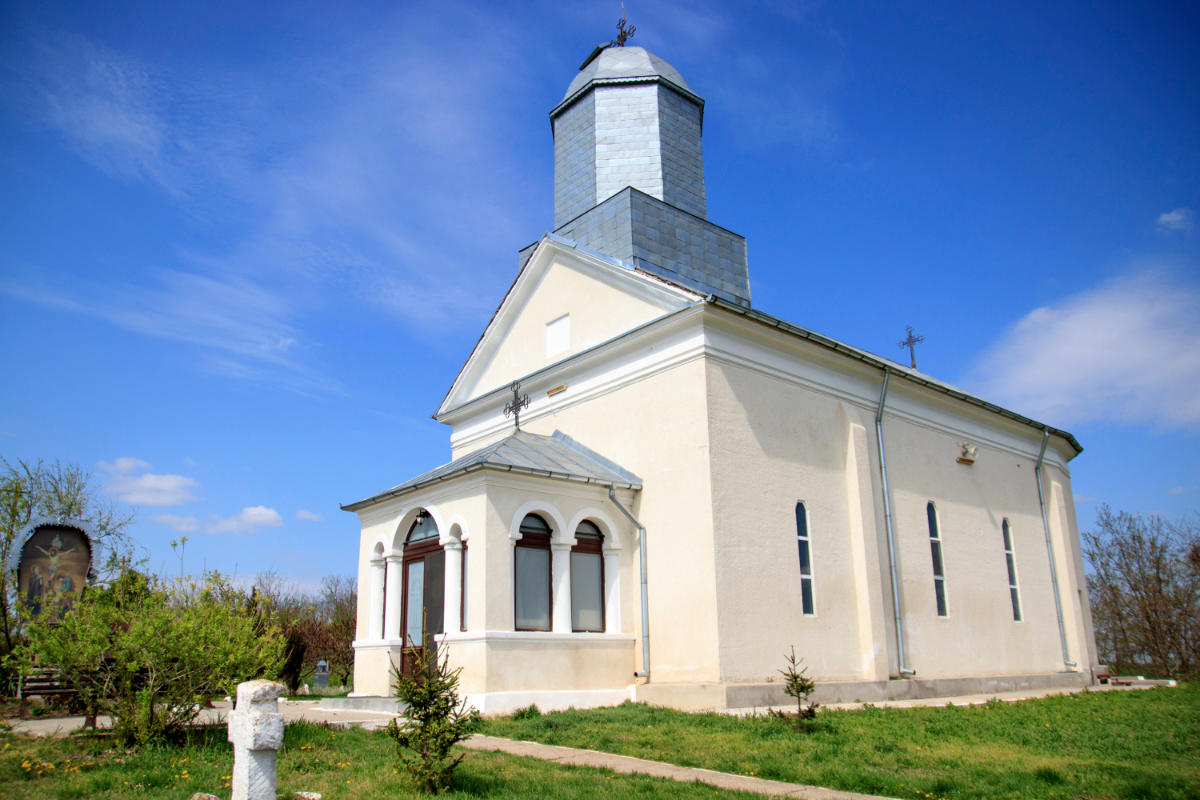Tăriceni Monastery
Category TempleLOCATION
Tariceni
917096 Călăraşi
DESCRIPTION
The Tăriceni Monastery is built of brick, rooted with branches and soil, a characteristic of all the churches in Baragan, where river stones are missing. The construction material and technique shows that the monastic settlement was raised from a spiritual necessity of the locals and did not have a defense role. It was a permanent resting place, a stop to purify the soul for the locals, as well as for hikers traveling from Bucharest to the Danube. According to the villagers it was built on the hill, in a rectangular shape without a fencing wall, with Abbot Houses on the north and west side. It has a monolithic plan, since at the beginning, it was composed, of the porch, the antechamber, the nave and the altar, and later a double-columned column and two lateral windows were added. The church's narthex is very small and is not separated from the nave by a wall, as in other churches. Just like the porch, the narthex is vaulted with a longitudinally supported cap. The exterior decoration is extremely simple. A medial girdle which girded the perimeter of the monument as well as the stone frames of the entrance door and the windows is placed at the top, on a white background. At the bottom, the only decor is the one foot high pedestal. At the top, the masonry closes with a cornice made of bricks, formed in a triangle. Few windows are underlined with archivolts. Describing the exterior of the church, we can not overlook a particular aspect of its architecture. That is the perfect hexagonal shape of the turret drum.
The bell tower and the club that are used to signal the beginning of church service, in front of the church. The roof is made of a metal sheet in two slopes. The original painting is preserved at the church entrance, the icons on both sides of the door, which were made by a Greek painter. In 1935, the priest Alexe Voicu appealed to the painter Dogarsascu for repainting.
Inside you can find other valuable icons brought from the Holy Mount Athos, the proof being the Greek scripture. The interior also has a vibrant chroma, using especially red, green, white and yellow-gold, which gives it a distinct luminosity. The faces of the saints are bright, optimistic, as if in harmony with the spirit of the inhabitants of the village of Tăriceni, who resisted the events of the time. They like to say that Tariceni means the strength of those who demand it, that is, the perseverance of those who believe in God's existence and remain faithfull. Nowadays the Church is embellished with the gifts of those who come to open their heart and forget about the stress of everyday life.[1]
HISTORY
The Tariceni Monastery was founded in 2001. The 1834 church was founded by the Greek merchant Hristofor Guva. The church was transformed into a monastery by Greeks and Romanians from the Odaia Vladichii Parish (present day Sultana). After the church was finished, it was dedicated to the Holy Mountain. The monastery was abolished with the secularization by Alexandru Ioan Cuza, and the church remained in the care of the village residents until 1970-1971, when they were moved by the communist regime.
In August 2001 Bishop Damaschin Coravu redeemed the old church of the Tariceni village, which he found in a deplorable state, abandoned for thirty years. He turned it into a monk's hermitage, with common living spaces, entrusting it to the organization and leadership of the young hieromonah Zosima Alecu. Thus, the process of repairing and building the church and the monastic premises began.
After the passing of Zosima Alecu in 2007, the Tariceni settlement became a monastery for nuns.[2]
At present, the village has only a few houses that are still standing, and the church of the monastery with its households.
SITE SIGNIFICANCE
Religious site
OTHER INFORMATION
On a hill in the vicinity of the church you can find a small building, belonging to the monastery, erected in 1850, with the shape of a chapel, imitating in miniature the church, covering a surface of about 15 m2. The Troitza, dedicated to the Holy Martyr Philofteia, housed the remains of Saint Paraschiva who had passed there. The access to the monastery is currently indicated by a trinity with the All Saints Sunday church built-in. The All Saints Sunday church was raised on the nearby national road.
CLASSIFICATION
Religious site
[1] Tăriceni, Călărași
https://ro.wikipedia.org/wiki/T%C4%83riceni,_C%C4%83l%C4%83ra%C8%99i
[2] Manastirea Tariceni
https://www.crestinortodox.ro/manastiri/manastirea-tariceni-117565.html




